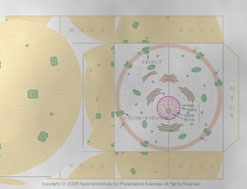
Eukaryotic cells secrete and take up biomolecules such as macromolecular nutrients and signaling molecules by mechanisms involving intracellular membranes. Analogous to organs in the animal body, the intracellular membrane structures are called organelles.
When cells secrete or take up macromolecules, the cargo molecules are transported between organelles by a characteristic form of transport, the so called intracellular membrane traffic. The processes of membrane traffic can be viewed as formation of membrane domains from the donor organelle from which materials are transported, followed by membrane fusion of the formed domains with the target organelle. This results in the transport of membrane components as well as luminal cargos. In order to sustain the adequate functioning of each organelle, molecules must be transported to their final destinations with astonishing specificity. This specificity is based on specific molecular interactions, such as protein-protein, lipid-protein, and lipid-lipid interactions.
It has recently been increasingly noticed that the physiological roles of membrane traffic are quite versatile: not only does membrane traffic perform intracellular cargo logistics, but it also works as the integration system of cellular signaling in various physiological aspects including developmental regulation.

